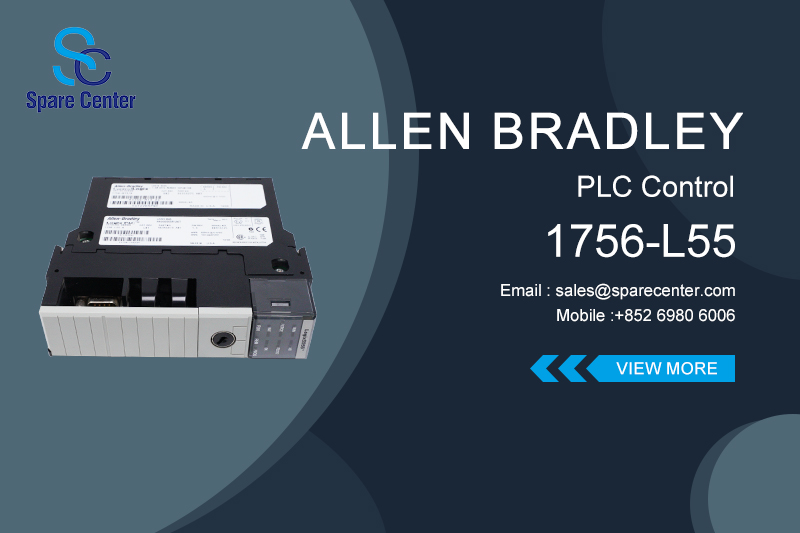Introduction In the world of industrial automation, the efficiency and reliability of control systems are crucial. The 1756-L55 Allen Bradley PLC Control is a leading solution designed to meet these needs effectively. This advanced Allen Bradley PLC offers a blend of features that significantly enhance automation processes. This article delves into how the 1756-L55 PLC improves automation by exploring its key features, benefits, and practical applications. Advanced Processing Power for Enhanced Control The 1756-L55 Allen Bradley PLC Control stands out for its advanced processing capabilities, which play a pivotal role in improving automation. Equipped with a powerful 1 GHz processor, the 1756-L55 PLC delivers rapid data processing, enabling real-time control and decision-making. This high-speed processing power is essential for handling complex automation tasks and managing large-scale systems efficiently. With its extensive 2 MB user memory, the 1756-L55 Allen Bradley PLC can accommodate extensive control programs and data, facilitating sophisticated control strategies. This large memory capacity ensures that the 1756-L55 PLC can manage multiple tasks simultaneously without performance degradation. As a result, it provides a more responsive and reliable control system that adapts seamlessly to dynamic industrial environments. |
|
Flexible Communication Options for Seamless Integration
Effective communication is critical for integrating various components within an automation system. The 1756-L55 ControlLogix PLC excels in this aspect by supporting multiple communication protocols, including Ethernet/IP and ControlNet. These high-speed communication options ensure smooth data exchange between the PLC and other devices, such as sensors, actuators, and remote I/O modules.
The flexibility in communication options offered by the 1756-L55 PLC allows for easy integration with existing systems and new technologies. This capability not only simplifies system setup but also enhances overall performance by reducing communication bottlenecks. Additionally, the PLC’s modular design facilitates the addition of communication cards and other modules, further expanding its connectivity and adaptability.
Robust Design for Reliable Performance
Reliability is a cornerstone of effective automation, and the 1756-L55 Allen Bradley PLC Control is designed with this principle in mind. The PLC features a robust construction that withstands harsh industrial environments, including extreme temperatures, vibrations, and shocks. This durability ensures consistent performance even in challenging conditions.
Moreover, the 1756-L55 PLC Control offers redundancy options, such as redundant power supplies and communication modules, to boost system reliability. These redundancy features are particularly valuable in mission-critical applications where downtime can have significant consequences. By incorporating redundant components, the 1756-L55 Allen Bradley PLC minimizes the risk of system failures and ensures continuous operation.
Practical Applications and Benefits
The 1756-L55 Allen Bradley PLC Control is versatile and finds application across various industries, each benefiting from its advanced features. Here are some key applications and the benefits they offer:
Manufacturing: In manufacturing environments, the 1756-L55 PLC Control can manage complex production lines, coordinate equipment, and monitor process parameters. Its high processing speed and large memory capacity enable efficient handling of intricate control tasks, leading to increased productivity and reduced downtime.
Process Control: The 1756-L55 Allen Bradley PLC is well-suited for process control applications in industries such as chemical processing and oil and gas. Its reliable communication and robust design ensure stable control of complex processes, contributing to enhanced safety and operational efficiency.
Material Handling: For automated material handling systems, the 1756-L55 PLC provides precise control of conveyors, sorting systems, and robotic arms. Its flexibility and high-speed communication facilitate smooth and efficient material flow, reducing manual intervention and improving overall system performance.
Building Automation: In building management systems, the 1756-L55 Allen Bradley PLC Control can regulate HVAC systems, lighting, and security systems. Its modular design and ease of integration allow for comprehensive control of various building components, optimizing energy usage and enhancing occupant comfort.
Conclusion
The 1756-L55 Allen Bradley PLC Control is a powerful tool that greatly enhances automation across diverse industrial applications. Its advanced processing power, flexible communication options, and robust design contribute to improved control, efficiency, and reliability. By leveraging the capabilities of the 1756-L55 PLC, businesses can achieve superior performance in manufacturing, process control, material handling, and building automation. As industries continue to evolve, the 1756-L55 Allen Bradley PLC Control remains a crucial component in driving automation success and maintaining a competitive edge in today’s dynamic market.
1756-L55 PLC,1756-L55 PLC,1756-L55 PLC,1756-L55 PLC,1756-L55 PLC,1756-L55 PLC,1756-L55 PLC



